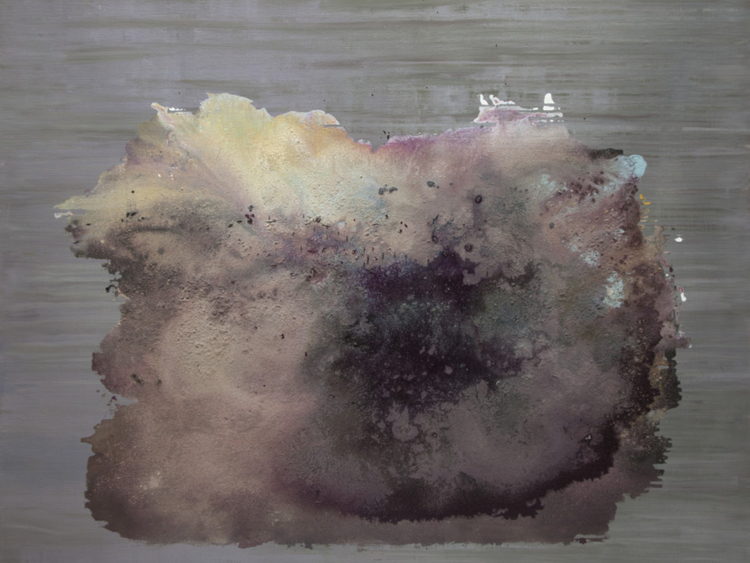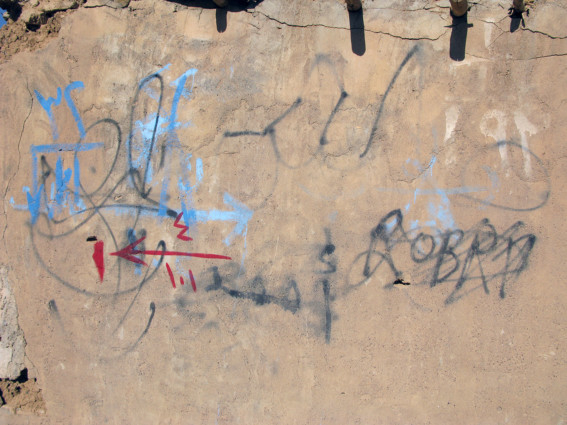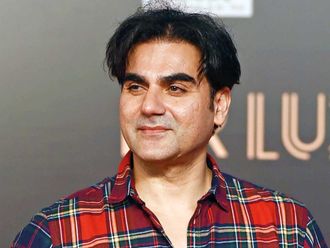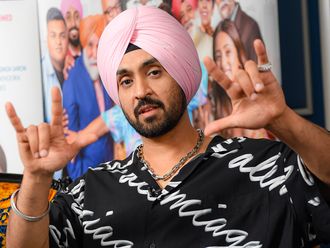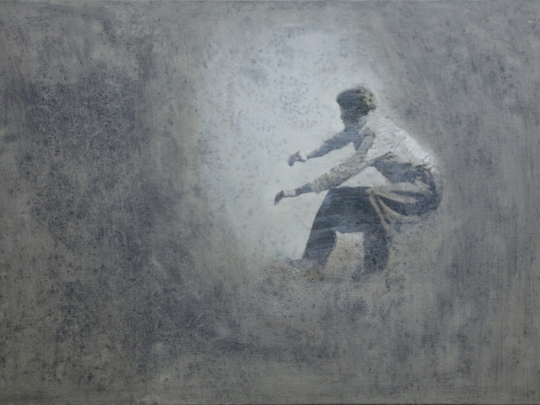
Azad Nanakeli was born in Erbil, which is now part of the Kurdistan Autonomous Region in Iraq, and has been living in Florence for more than two decades. His work reflects his multicultural identity and has been featured in three different pavilions at the Venice Biennale — the Kurdish Pavilion in 2009, the Iraqi Pavilion in 2011 and the Iranian Pavilion in 2015.
In his first exhibition in Dubai, Highlighted Memory the artist is showcasing paintings and photographs from two recent series titled Highlighted Memory and The Other World. The artworks comment on contemporary political and social realities but they have a deeply spiritual feel. Through his compositions, Nanakeli connects personal and collective experiences, the past and the present, and memory with identity in a quest for a better world.
The Highlighted Memory series was inspired by his visit to Erbil in 1994. It includes photographs of the ancient fortress, Qala which was the most important landmark in Iraqi Kurdistan, and of old buildings including the house where he grew up. The photographs are steeped in nostalgia, with the cracks in the dilapidated walls, the numbers and names written on the rusted doors, objects such as a shoe left behind by an occupant, and pictures of the artist’s family digitally pasted on the barred window of his childhood home evoking old memories and the passage of time.
“Despite living in Italy for so many years, I often feel like an outsider there. I have been living away from my birthplace for a long time, yet there are many memories that I carried with me and remain a part of my life and my identity. But after so many years away, I also felt like a foreigner in Erbil. The town has grown so much and urbanisation and modernisation has changed the culture so much that I became keenly aware of the personal division with my own culture. The fortress called Qala, which overlooked the city centre of Erbil was an ancient city to the Assyrians, Abbasids and Ottomans and the site of a battle lost by Alexander the Great. It was recognised as a Unesco World Heritage site, but was long neglected. These buildings including my family home do not exist anymore except in my memory. So these photographs I took in 1994 represent a memorial to the site, and a moment of reflection on the architecture of what is lost and what is preserved,” the artist says.
The series also includes paintings that express feelings of nostalgia, exclusion and the fading architecture of memory. Done in pastel colours, the textured paintings look like classical Italian frescoes, and have a deeply spiritual feel. One composition shows a man dressed in traditional Kurdish attire standing at a doorway overlooking a vast and beautiful landscape beyond. He is facing a similar but smaller figure perched on a dark column, as if looking at his old self and how things have changed with the passage of time. The artist has placed a three-dimensional replica of the column beside the painting to suggest the removal of layers of memory.
In another painting a figure is seen floating above a circle of illumination. “The figure in these paintings is a young man who was among nine Kurds killed by Khomeini’s regime when he came to power. I have tried to give him a new life and a better one by opening a door into a new world of light. I also want to convey that we may be damaged by many things around us, and feel that we do not understand the world anymore, but we can go deep within ourselves to find the light and positivity that will lift us up,” Nanakeli says.
The paintings in The Other World series are equally spiritual and emotional. They depict tiny, barely visible figures looking at a nebulous world in the distance, or more defined figures entering this unknown but illuminated ‘other world’.
“Our world has changed and we now live in a society driven by technology and consumerism, where people do not talk to each other or care for one another. I feel we need to find a new world that is different, not so materialistic and more humane. But my paintings are not about escaping from the realities of the present or being weighed down by the baggage of the past. They are about excavating personal and collective memory to learn from the past and to find a way to get back in touch with our humanity,” Nanakeli says.
He is also showing a two-channel video titled Awaz (voice) originally created for the Venice Biennale. The video has been shot with a background showing a map of the Middle East before it was divided by the Sykes Picot agreement and other political power games. It features a woman performing the traditional dances of different countries in the region that have been divided by manmade borders in the recent past. Her costume and moves change each time she crosses the line separating the two screens. The video uses cultural elements that are part of our shared history and memory to comment on political issues that divide us.
Highlighted Memory will run at XVA Gallery, in the Al Fahidi Historical Neighbourhood, until January 9, 2018.



